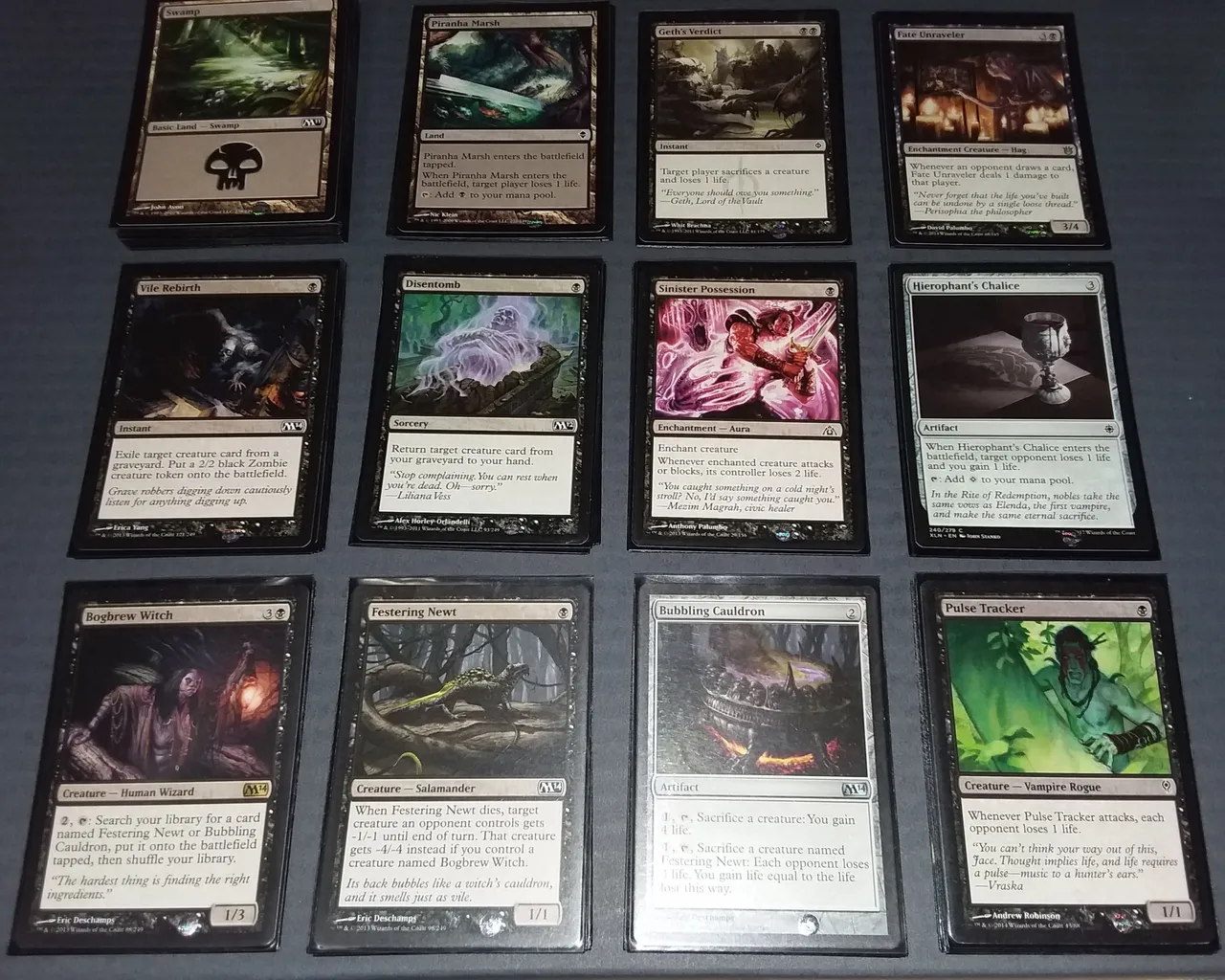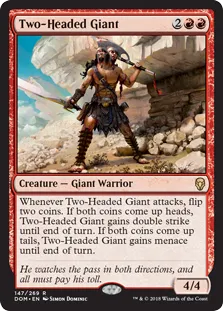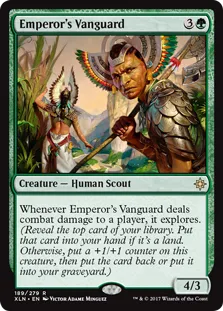As I said in last week's post, An Introduction to Commander, a lot of us can't afford to keep up with the official release cycle of 1 v. 1 tournament play, but "kitchen-table Magic" includes a variety of options for more casual gamers. It is certainly possible to just allow old cards and add more players, but why not try some new strategic layers?
Before we get to that, here's another look at standard rules and deck construction.
Gameplay Basics
To start any MTG game, each player shuffles their deck, passes it to an opponent to cut, and draws a hand of seven cards. The remaining deck is placed face down in a draw pile called the library, and as play progresses, cards played or creatures slain are put in a discard pile called the graveyard. Cards may also be exiled from the game entirely.
If there are only two players, the first omits their first draw step. Otherwise, players alternate and turns progress in a series of phases:
- Upkeep - untap cards, resolve any "at start of turn" effects, and then draw a card from your library.
- Pre-combat main Phase - play cards and activate card abilities.
- Combat - choose creatures to attack one or more opponents, if desired.
- Post-combat main phase - same as above.
- End step - resolve any "end of turn" effects and discard as needed to reduce hand size to seven.
Each player typically begins the game with 20 life points, and is eliminated from the game if their life point pool is reduced to zero, they cannot draw any cards due to an empty library, or some alternate win condition is met depending on the cards in play.
Deck Construction

In a Standard deck, there are at least 60 cards. Players are allowed unlimited basic land cards and up to four copies of any other card. Decks can be larger, but most players use that 60-card minimum plus a sideboard of 15 optional cards to swap in depending on an opponent's anticipated strengths and weaknesses. You can read this old post about my own swampy death witchcraft deck.
Two-Headed Giant
If you have an even number of players, split into teams of two. Each team shares turn order and a life pool of 30 points, but act on their own in all other respects. They do not share cards, mana pools, or command of their creatures. Learn more here.
This format typically uses a variation on standard deck construction rules. Typically, each deck can contain up to four copies of a given card, but each team is limited by that rule here. A good sideboard can help select alternate cards on the fly if this is an issue.
The card shown here isn't really relevant aside from the name, but it sure would be fun to play in this format!
While it is not listed as an official option on the Wizards of the Coast website, you could also play this using Commander decks and a shared 60-life pool.
Emperor
Do you have a particularly large group of players which can be divided into two odd-numbered teams? Why not try this casual format?
The teams sit on opposite sides of a table. The center player on each team is the Emperor, and despite the name of card depicted, the players to the emperor's left and right are his generals. The game ends when one Emperor is reduced to zero life. However, each player has a limited range of influence. The generals can only attack adjacent players. Thus, the Emperors cannot directly hit each other initially, and their thrones are only in danger from rival generals when one of their allied generals falls.
One Emperor is chosen at random to start the game. Each player has their own individual life pool, and plays their turn in order as priority is exchanged around the table. The Emperor can support his generals by tapping his creatures and deploying them to the general's control. If the general falls, their cards are all immediately exiled, but those owned by any other player are returned to the owner's control.
Archenemy
This game was released as a standalone product which remains compatible with other Magic: The Gathering formats. It is possible to buy the special Archenemy scheme cards online, but why not try building your own selection of instants and enchantments for a homebrew game?
I know, this card is the least illustrative yet. Sorry!
Unlike the previous suggestions, a homebrew version can be played with an odd number of players. One player is designated the Archenemy. That player always plays first, starts with 40 life, and plays the top scheme card during their pre-combat main phase. All other players start with the usual 20 life, and may block attacks targeted at their allies with their own creatures. At least three opponents will likely be required to threaten the Archenemy, so teamwork is paramount.
This format is meant to be a serious challenge for those fighting the archenemy, so balancing decks and scheme cards for a homebrew version could be interesting. Share your ideas in the comments!



